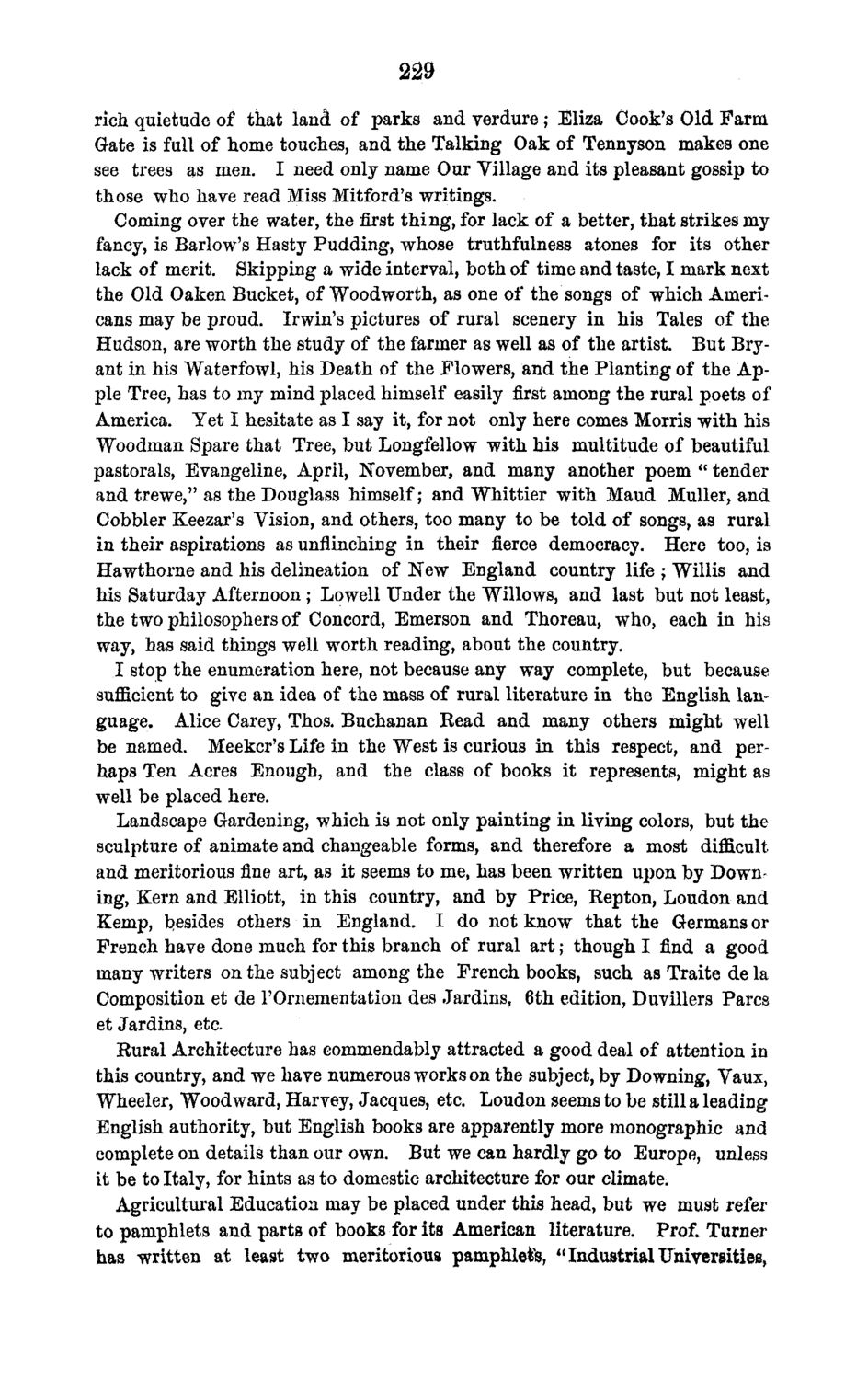| |
| |
Caption: Board of Trustees Minutes - 1870
This is a reduced-resolution page image for fast online browsing.

EXTRACTED TEXT FROM PAGE:
229 rich quietude of that land of parks and verdure; Eliza Cook's Old Farm Gate is full of home touches, and the Talking Oak of Tennyson makes one see trees as men. I need only name Our Village and its pleasant gossip to those who have read Miss Mitford's writings. Coming over the water, the first thing, for lack of a better, that strikes my fancy, is Barlow's Hasty Pudding, whose truthfulness atones for its other lack of merit. Skipping a wide interval, both of time and taste, I mark next the Old Oaken Bucket, of Woodworth, as one of the songs of which Americans may be proud. Irwin's pictures of rural scenery in his Tales of the Hudson, are worth the study of the farmer as well as of the artist. But Bryant in his Waterfowl, his Death of the Flowers, and the Planting of the Apple Tree, has to my mind placed himself easily first among the rural poets of America. Yet I hesitate as I say it, for not only here comes Morris with his Woodman Spare that Tree, but Longfellow with his multitude of beautiful pastorals, Evangeline, April, November, and many another poem " tender and trewe," as the Douglass himself; and Whittier with Maud Muller, and Cobbler Keezar's Vision, and others, too many to be told of songs, as rural in their aspirations as unflinching in their fierce democracy. Here too, is Hawthorne and his delineation of New England country life ; Willis and his Saturday Afternoon ; Lowell Under the Willows, and last but not least, the two philosophers of Concord, Emerson and Thoreau, who, each in his way, has said things well worth reading, about the country. I stop the enumeration here, not because any way complete, but because sufficient to give an idea of the mass of rural literature in the English language. Alice Carey, Thos. Buchanan Bead and many others might well be named. Meeker's Life in the West is curious in this respect, and perhaps Ten Acres Enough, and the class of books it represents, might as well be placed here. Landscape Gardening, which is not only painting in living colors, but the sculpture of animate and changeable forms, and therefore a most difficult and meritorious fine art, as it seems to me, has been written upon by Downing, Kern and Elliott, in this country, and by Price, Kepton, Loudon and Kemp, Resides others in England. I do not know that the Germans or French have done much for this branch of rural art; though I find a good many writers on the subject among the French books, such as Traite dela Composition et de l'Ornementation des Jardins, 6th edition, Duvillers Pares et Jardins, etc. Rural Architecture has commendably attracted a good deal of attention in this country, and we have numerous works on the subject, by Downing, Vaux, Wheeler, Woodward, Harvey, Jacques, etc. Loudon seems to be still a leading English authority, but English books are apparently more monographic and complete on details than our own. But we can hardly go to Europe, unless it be to Italy, for hints as to domestic architecture for our climate. Agricultural Education may be placed under this head, but we must refer to pamphlets and parts of books for its American literature. Prof. Turner has written at least two meritorious pamphlets, "Industrial Universities,
| |